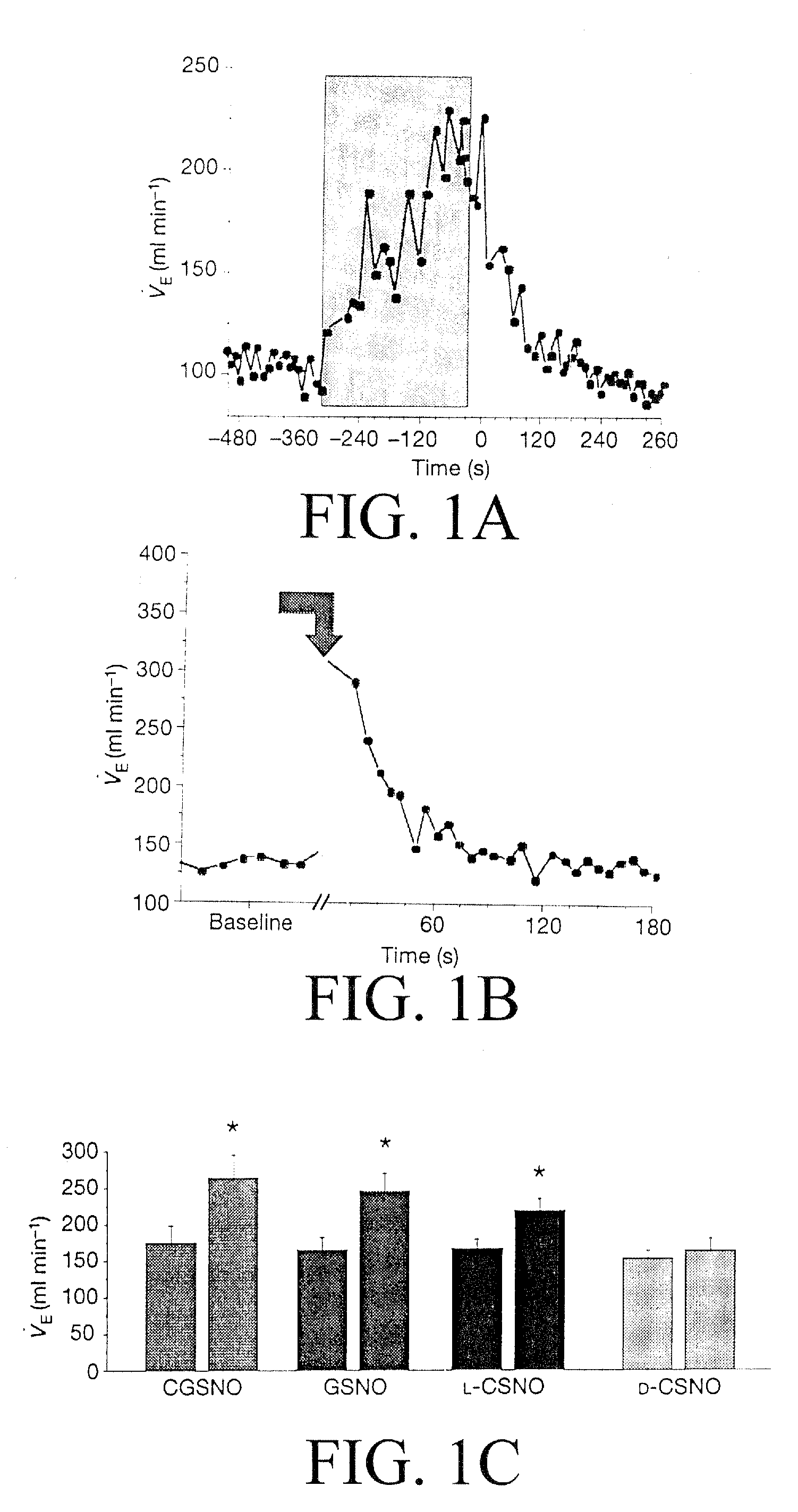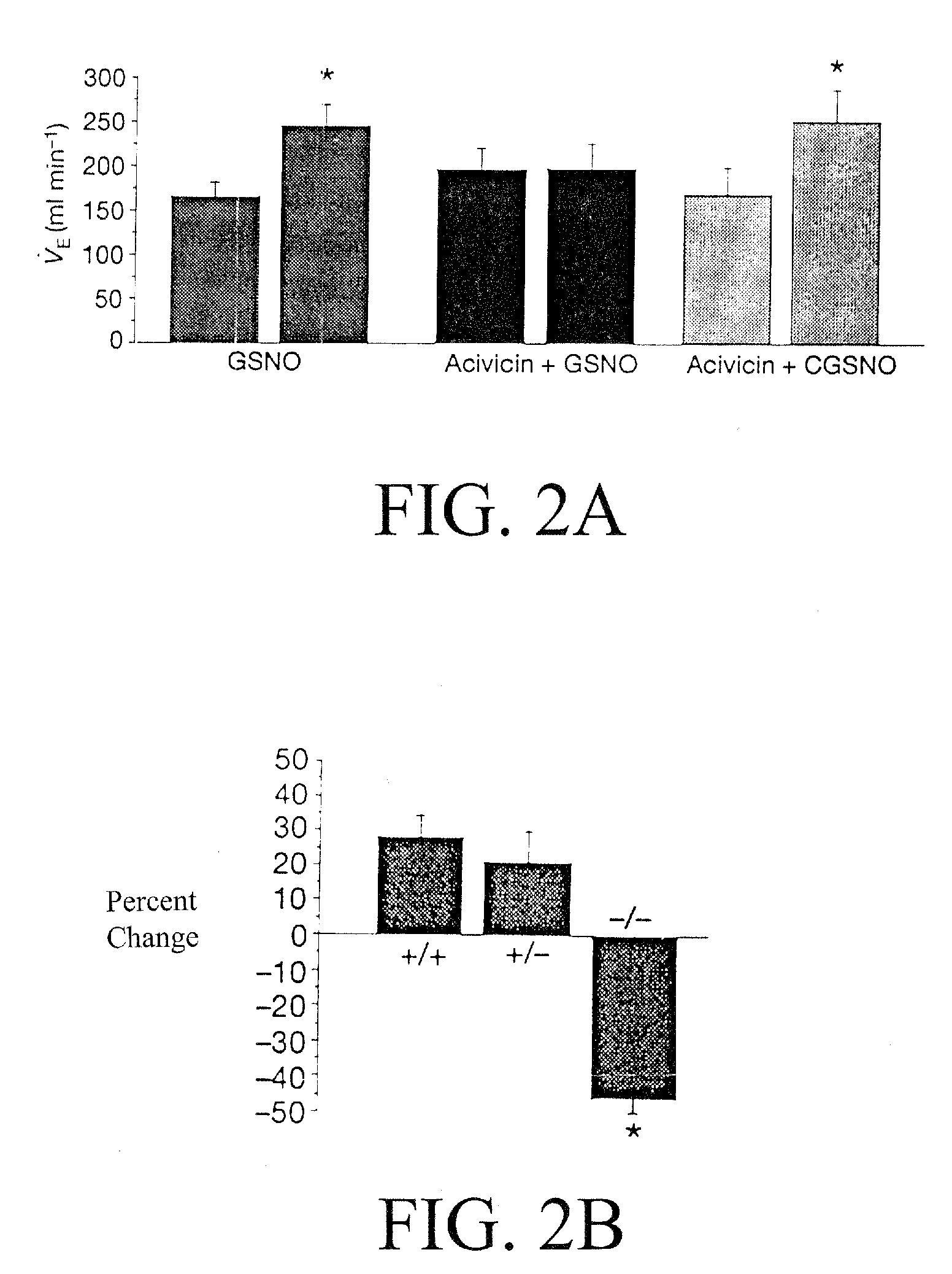Use of S-Nitrosothiol Signaling to Treat Disordered Control of Breathing
a technology of s-nitrosothiol and signaling, which is applied in the direction of biocide, drug composition, peptide/protein ingredients, etc., can solve the problems of abnormal central control of ventilation, contribute to respiratory distress in newborn mammals and sleep apnea, and fail to breathe more often when oxygen levels are low, so as to increase the minute ventilation
- Summary
- Abstract
- Description
- Claims
- Application Information
AI Technical Summary
Problems solved by technology
Method used
Image
Examples
example 1
SNOs Stimulate Respiratory Centers of the NTS to Increase VE
[0033]To test the hypothesis that SNOs stimulate respiratory centers of the NTS to increase VE, the ability of endogenous SNOs to increase VE in freely behaving, conscious rats using whole-body plethysmography was examined. CSNO, GSNO and CGSNO (1 nmol each) caused equivalent increases in VE, whereas D-CSNO had no effect (see FIG. 1; dose threshold for L-SNOs is 0.1 pmol). The exogenous NO donor, S-nitroso-N-acetyl-L-penicillamine, had similar but reduced effects (not shown). The L- and D-isomers of CSNO decayed at identical rates in rat brainstem homogenates (26% min—1 mg—1 protein each; P=not significant (NS)). Furthermore, neither excess 8-bromocyclic GMP nor glutathione had any effect on VE (n=3; P=NS).
[0034]Next, a low-mass fraction (less than a relative molecular mass of 10,000 (Mr 10K)) derived from deoxygenated blood was studied to determine whether the fraction would similarly increase VE. This fraction reproduced...
PUM
| Property | Measurement | Unit |
|---|---|---|
| depth | aaaaa | aaaaa |
| depth | aaaaa | aaaaa |
| pH | aaaaa | aaaaa |
Abstract
Description
Claims
Application Information
 Login to View More
Login to View More - R&D
- Intellectual Property
- Life Sciences
- Materials
- Tech Scout
- Unparalleled Data Quality
- Higher Quality Content
- 60% Fewer Hallucinations
Browse by: Latest US Patents, China's latest patents, Technical Efficacy Thesaurus, Application Domain, Technology Topic, Popular Technical Reports.
© 2025 PatSnap. All rights reserved.Legal|Privacy policy|Modern Slavery Act Transparency Statement|Sitemap|About US| Contact US: help@patsnap.com


